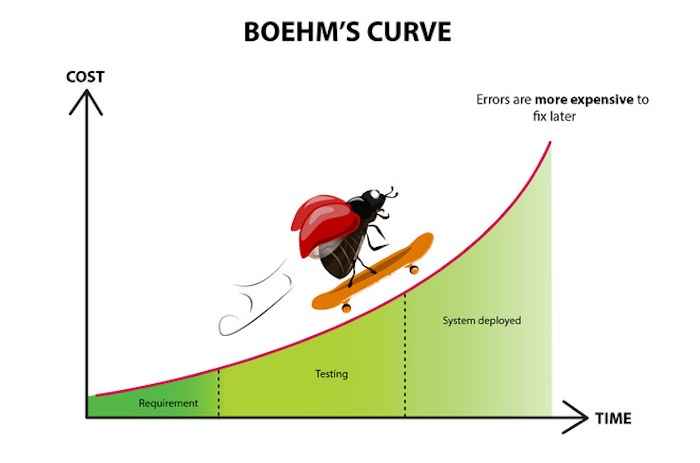General
March 21, 2013
A bug goes skateboarding on Boehm’s Curve
In our cartoon for today, you can see that a bug has gone skateboarding on Boehm’s Curve.

What does Boehm’s Curve tell us? The principle message behind the Boehm Curve is that bugs are always more expensive to fix later on in the process. It follows to logic in Boehm’s Curve that the same bugs would be much cheaper to fix earlier on in the curve.
Boehm’s Curve essentially states that you should go ahead and fix as many bugs as possible during the requirements and testing phases of a project as after deployment these bugs grow massively in expenditure involved.
Boehm’s Curve is explained well on the Software Carpentry site as well as on Stack Overflow.
Share article